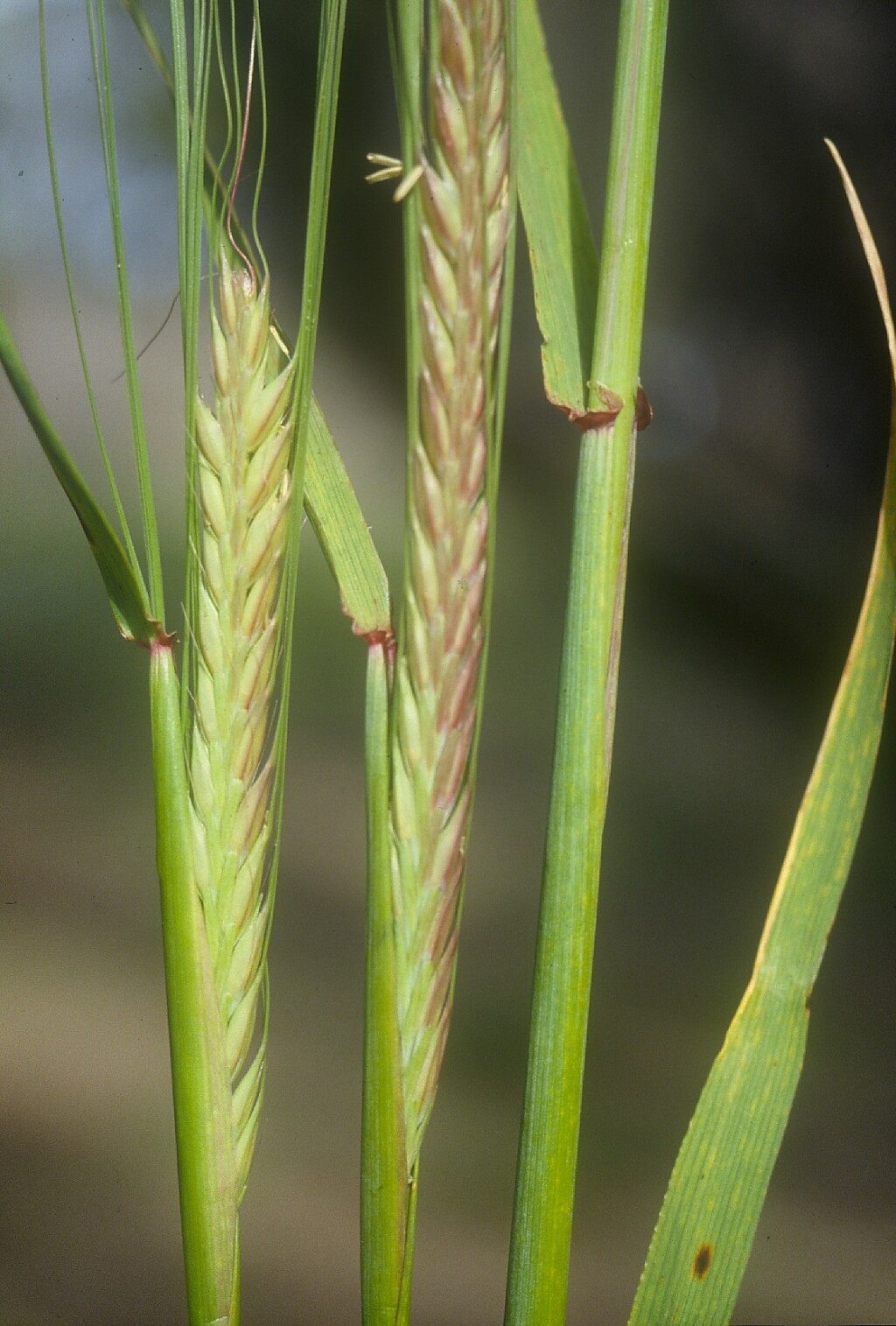Hordeum distichon
L. Two-rowed BarleySlender, tufted annual to 1 m high. Leaves glabrous; blade commonly finely scabrous, to 30 cm long, 4–15 mm wide; sheath smooth; ligule papery, truncate, 1–2 mm long, often oblique; auricles usually developed, falcate, encircling the culm. Inflorescence 4–12 cm long (excluding awns), 6-ranked, but only 2 central opposite ranks maturing seed. Spikelets 8–15 mm long (excluding awns); glumes 10–16 mm long including the 3–7 mm awn, silky-hairy in the lower part; lemma dorsally flattened, at least that of the central spikelet in each triad with flattened, scabrous awns 5–18 cm long; palea adhering to grain, slightly shorter than body of lemma. Flowers mainly Aug.–Oct.
LoM, MuM, Wim, GleP, VVP, VRiv, MuF, GipP, WaP, DunT, NIS, EGU. Also naturalised WA, SA, Qld, NSW, Tas.
Widely grown for its plump grain that is used in cooking, malt production and stock-feed. Common cultivars are 'Bass', 'Baudin', 'Buloke', 'Gairdner', 'Commander', 'Hindmarsh', 'Scope' and 'Westminster'.
Two-rowed Barley is generally lower in protein and higher in starch than Six-rowed Barley (H. vulgare) and is thus preferred for malt-production. It accounts for more than 90% of Australia's barley production. H. vulgare is sometimes preferred for stock and human food, but is doubtfully naturalised in Victoria.
Walsh, N.G. (1994). Poaceae. In: Walsh, N.G.; Entwisle, T.J., Flora of Victoria Vol. 2, Ferns and Allied Plants, Conifers and Monocotyledons, pp. 356–627. Inkata Press, Melbourne.
 Spinning
Spinning



